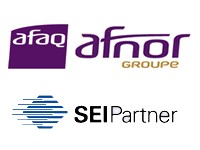Much awaited the first ISO Standard ISO 45001:2018 for Occupational Health and Safety has been published on 12th March 2018. ISO 45001:2018 formally named as “Occupational Health and Safety Management Systems – Requirements with Guidance for Use” is developed by Technical Committee ISO/PC 283 to provide a framework for safer workplace in any sector and in any part of world. More than 70 countries across the globe were involved in creation of this standard. ISO 45001:2018 will replace OHSAS 18001:2007.
As per survey of International Labour Organization, 2.78 million fatal accidents occur at work every year. ISO 45001 will provide easy to use framework to industry and relevant stakeholders to improve work-safety for workers and visitors by continually improving their Health and Safety Performance.
The new standard is based on common structure applied in all ISO Management Systems as defined in Annex SL with PDCA (Plan-Do-Check-Act) Model as its foundation framework. The New Standard will easily integrate with other ISO Standards, and it can be directly aligned with the 2015 versions of ISO 9001 and ISO 14001.
International Accreditation Forum (IAF) has issued its Mandatory Documents (IAF-MD-21:2018) providing requirements for Migration from OHSAS 18001 to ISO 45001:2018. ISO 45001:2018 will replace OHSAS 18001:2007 and all currently OHSAS 18001 certified companies will have 3 years’ transition-time to migrate to new standard. Guidance to implement the new standard is provided in Annexure “A” of the Standard.
Benefits of ISO 45001
Occupational Health and Safety Management is important for you, because:
- It eliminates or minimizes the number of accidents or casualties at work place.
- Provides Framework to identify control and prevent work-related injuries.
- By implementation of an ISO 45001 certification, your organization will confirm that it cares about the well-being of employees and is continually making efforts to enhance their welfare.
- It confirms that organization is aware of the policies and processes needed to reduce work injuries.
- Provides a competitive advantage by improving your brand’s reputation.
- Provides opportunity for organizations to align their strategic direction with their OH&S management system.
Tangible benefits of implementing and adopting occupational health and safety management systems to the organizations are:
- Reduced work-related injuries, reduced ill health and fatal causalities
- Eliminate or minimize OH&S risks
- Improve OH&S performance and effectiveness
- Demonstrate corporate responsibility and meet supply chain requirements
- Protect brand reputation
- Motivate and engage staff through consultation and participation
Structure of ISO 45001:2018 Standard is as under
- Scope
- Normative References
- Terms and Definitions
- Context of the Organization
- Leadership
- Planning
- Support
- Operation
- Performance Evaluation
- Improvement


